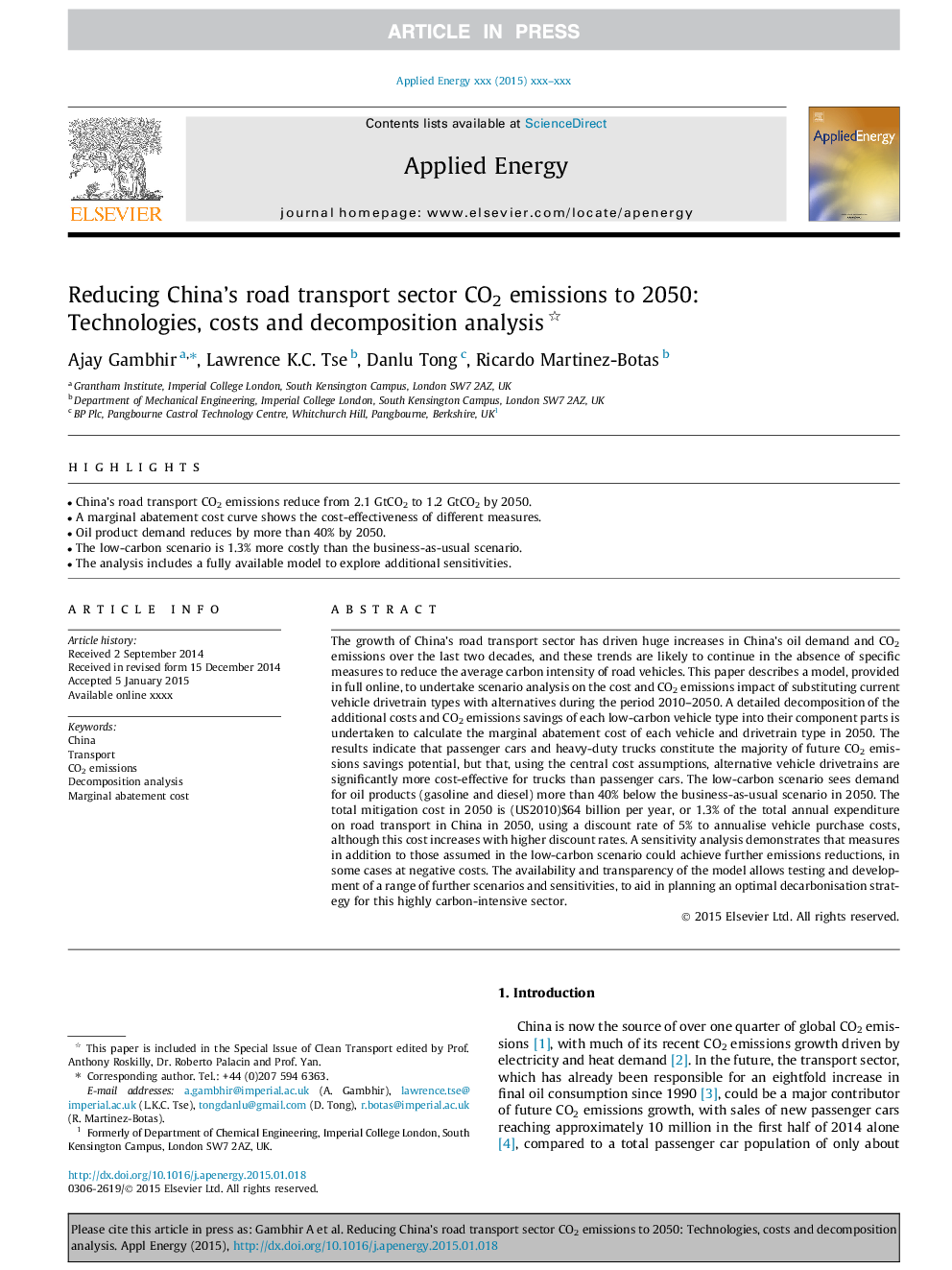| Article ID | Journal | Published Year | Pages | File Type |
|---|---|---|---|---|
| 6686136 | Applied Energy | 2015 | 13 Pages |
Abstract
The growth of China's road transport sector has driven huge increases in China's oil demand and CO2 emissions over the last two decades, and these trends are likely to continue in the absence of specific measures to reduce the average carbon intensity of road vehicles. This paper describes a model, provided in full online, to undertake scenario analysis on the cost and CO2 emissions impact of substituting current vehicle drivetrain types with alternatives during the period 2010-2050. A detailed decomposition of the additional costs and CO2 emissions savings of each low-carbon vehicle type into their component parts is undertaken to calculate the marginal abatement cost of each vehicle and drivetrain type in 2050. The results indicate that passenger cars and heavy-duty trucks constitute the majority of future CO2 emissions savings potential, but that, using the central cost assumptions, alternative vehicle drivetrains are significantly more cost-effective for trucks than passenger cars. The low-carbon scenario sees demand for oil products (gasoline and diesel) more than 40% below the business-as-usual scenario in 2050. The total mitigation cost in 2050 is (US2010)$64 billion per year, or 1.3% of the total annual expenditure on road transport in China in 2050, using a discount rate of 5% to annualise vehicle purchase costs, although this cost increases with higher discount rates. A sensitivity analysis demonstrates that measures in addition to those assumed in the low-carbon scenario could achieve further emissions reductions, in some cases at negative costs. The availability and transparency of the model allows testing and development of a range of further scenarios and sensitivities, to aid in planning an optimal decarbonisation strategy for this highly carbon-intensive sector.
Related Topics
Physical Sciences and Engineering
Energy
Energy Engineering and Power Technology
Authors
Ajay Gambhir, Lawrence K.C. Tse, Danlu Tong, Ricardo Martinez-Botas,
